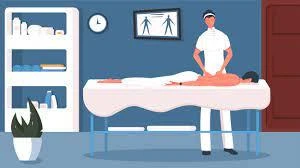
Massage therapy is a manual manipulation of the body’s soft tissues (muscles, connective tissues, tendons, ligaments) to enhance a person’s health and well-being. It is a hands-on treatment that involves various techniques, pressures, and movements applied to the body. Massage therapy has been practiced for thousands of years and is known for its therapeutic effects on the body and mind.
Key components of massage therapy include:
1. Techniques: There are numerous massage techniques, each with its own specific benefits. Some common techniques include Swedish massage, deep tissue massage, sports massage, and trigger point therapy. The choice of technique often depends on the individual’s needs and the goals of the massage session.
2. Pressure: Massage therapists can apply different levels of pressure, ranging from light and gentle to deep and firm. The amount of pressure used is typically adjusted based on the client’s preferences, comfort, and the goals of the massage.
3. Benefits: Massage therapy offers a variety of physical and mental health benefits. These may include relaxation, stress reduction, improved circulation, enhanced flexibility, relief from muscle tension and soreness, and promotion of overall well-being. Massage can also be used as part of rehabilitation programs for certain injuries or conditions.
4. Conditions Treated: Massage therapy is often used to address specific conditions such as chronic pain, headaches, musculoskeletal injuries, and stress-related issues. It is also commonly used as a complementary therapy in conjunction with other medical treatments.
5. Settings: Massage therapy can be provided in various settings, including spas, wellness centers, clinics, and hospitals. Licensed massage therapists may also offer their services independently or as part of a healthcare team.
6. Licensed Professionals: In many jurisdictions, massage therapists are required to be licensed or certified. They typically undergo formal training in anatomy, physiology, and various massage techniques. This ensures that they have the knowledge and skills necessary to provide safe and effective treatments.
7. Client Participation: Clients may play an active role in their massage sessions by communicating their preferences, comfort levels, and any specific areas of concern. Open communication between the client and the therapist helps ensure a positive and tailored experience.
It’s essential to note that while massage therapy can be beneficial for many people, there are certain situations where it may not be suitable. Individuals with certain medical conditions or those who are pregnant should consult with a healthcare professional before undergoing massage therapy. Additionally, it’s important to seek the services of a qualified and licensed massage therapist for a safe and effective experience.
Massage therapy has been studied for its potential health benefits, and there is a body of evidence supporting its efficacy for certain conditions. However, it's important to note that the quality of evidence can vary, and more research is often needed to establish the full extent of massage therapy’s effectiveness. Here are some areas where evidence suggests positive outcomes for massage therapy:
1. Pain Management:
2. Mental Health and Stress Reduction:
3. Physical Performance and Recovery:
4. Sleep Improvement:
5. Headaches and Migraines:
6. Immune Function:
It’s important to acknowledge that while these findings are promising, the mechanisms through which massage therapy produces these effects are not always fully understood, and more research is needed to establish causation and identify the optimal techniques and durations for specific conditions.
Additionally, individual responses to massage therapy can vary, and its effectiveness may depend on factors such as the type of massage, the specific condition being treated, and the characteristics of the individual receiving the massage.
Before seeking massage therapy for a specific health concern, it’s advisable to consult with a healthcare professional, especially if you have underlying medical conditions or are receiving other forms of treatment. A qualified massage therapist can work with you to tailor the treatment to your individual needs and preferences.